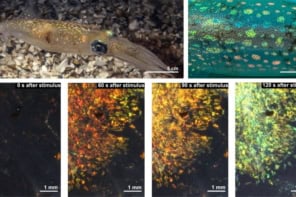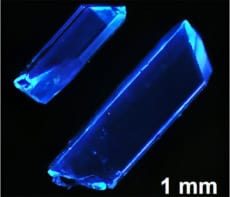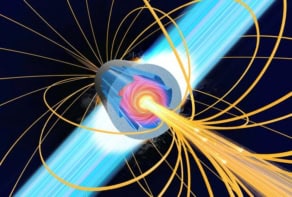Pulses that travel faster than light have been sent over a significant distance for the first time. Alain Haché and Louis Poirier of the University of Moncton in Canada transmitted the pulses through a 120-metre cable made from a coaxial 'photonic crystal'. The achievement raises hopes that data could travel through electronic communications systems at almost the speed of light (A Haché and L Poirier 2002 Appl. Phys. Lett. 80 518).
When a pulse of radiation travels through a ‘dispersive’ medium, different wavelengths in the pulse move at different speeds and the pulse becomes distorted. Ordinary dispersion arises when the refractive index of a material changes with increasing wavelength. This stretches out the pulse and reduces the group velocity – the speed at which the peak of the pulse travels.
But ‘anomalous dispersion’ can occur in materials that absorb radiation in a certain range of wavelengths. The refractive index on either side of this absorption band changes sharply with wavelength. In these regions, the components of radiation at the tail of the pulse interfere destructively, and the peak of the wave is effectively pushed forward.
To create their cable, the Canadian researchers joined together five-metre sections of coaxial cable with alternating electrical impedences. Radiation in the frequency range 9 – 11 MHz is partially reflected at the boundaries of these segments, which gives the cable its absorption band. Haché and Poirier sent electromagnetic pulses with frequencies between 5 and 15 MHz through the cable, and found that the group velocity reached three times the speed of light for frequencies in the absorption band.
Haché and Poirier emphasize that their experiment does not break any laws of physics. Although the group velocity exceeds the speed of light – an effect permitted by relativity – each component of the pulse travels slower than light. It would be impossible to transmit information faster than light because it would be encoded onto a single frequency component.
But as Haché explains, many existing information systems are based on coaxial cables, and the current top speed for data is just two-thirds the speed of light. If the impedance of such cables were adapted, pulses sent at frequencies close to the absorption band could transmit information at speeds approaching that of light.
‘Oddly, the reason no one has done this before is that we are using what most people are trying to avoid – the back-reflection caused by impedance mismatch’, Haché told PhysicsWeb. ‘But as far as superluminal propagation goes, this is the key’.



